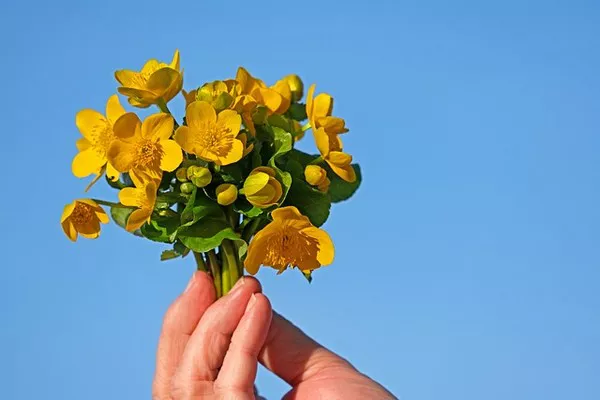Monarch butterflies (Danaus plexippus) are among the most iconic and beloved insects worldwide. Their striking orange and black wings, coupled with their remarkable migratory behavior, make them a favorite among nature enthusiasts. Central to their survival and lifecycle are flowers, which serve as crucial sources of nectar for adult butterflies. Understanding the preferred flowers of monarch butterflies not only provides insights into their ecological needs but also offers valuable guidance for conservation efforts and gardening practices aimed at supporting their populations.
The Importance of Nectar-Rich Flowers:
Nectar serves as the primary source of energy for adult monarch butterflies, providing the essential carbohydrates required for their flight, mating, and reproduction. Consequently, the availability of nectar-rich flowers significantly influences the survival and reproductive success of monarch populations. Monarchs exhibit strong preferences for specific flower species based on various factors, including nectar composition, flower morphology, and accessibility.
Preferred Flowers of Monarch Butterflies:
a. Milkweed (Asclepias spp.):
Milkweed stands out as the cornerstone of monarch butterfly conservation. As the exclusive larval host plant for monarch caterpillars, milkweed species, including common milkweed (Asclepias syriaca) and butterfly milkweed (Asclepias tuberosa), play a crucial role in supporting monarch populations. However, milkweed flowers also serve as vital nectar sources for adult monarchs, attracting them with their abundant nectar reserves and appealing fragrance.
b. Purple Coneflower (Echinacea purpurea):
Native to North America, purple coneflower is a popular choice among monarch butterflies for its rich nectar content and robust floral structure. Its vibrant purple petals and prominent central cones make it highly visible and attractive to pollinators, including monarchs. Purple coneflower blooms from summer to fall, providing a consistent nectar source for migrating monarchs during their journey.
c. Black-eyed Susan (Rudbeckia hirta):
Black-eyed Susan is another native wildflower cherished by monarch butterflies for its profuse blooms and ample nectar production. Its bright yellow petals with dark centers create a striking visual contrast, making it easily recognizable to pollinators. Black-eyed Susan’s extended flowering period from late spring to early fall ensures a continuous nectar supply for monarchs throughout their active season.
d. Zinnia (Zinnia spp.):
Zinnias, with their vibrant hues and diverse flower forms, are highly favored by monarch butterflies and other pollinators. Their compact, daisy-like blooms offer abundant nectar reserves accessible to butterflies with varying proboscis lengths. Zinnias are a popular choice for butterfly gardens and provide a colorful addition to landscapes while supporting monarch conservation efforts.
e. Liatris (Liatris spp.):
Liatris, also known as blazing star or gayfeather, is renowned for its tall spiky blooms adorned with purple, pink, or white flowers. Monarch butterflies are attracted to liatris for its high nectar yield and architectural appeal. Its elongated flower clusters provide ample landing space for butterflies, making nectar extraction convenient and efficient.
Conservation Implications:
Understanding the preferred flowers of monarch butterflies has significant implications for conservation strategies aimed at enhancing monarch habitat and bolstering declining populations. Conservation efforts should prioritize the preservation and restoration of native wildflower habitats rich in nectar resources, particularly milkweed species, which serve as both larval host plants and nectar sources for monarchs.
Additionally, incorporating monarch-friendly flowers into urban and suburban landscapes through butterfly gardens, pollinator-friendly plantings, and roadside habitats can create vital refueling stations for migrating monarchs, supporting their long-distance journeys and promoting population sustainability.
Gardening Practices to Support Monarchs:
Home gardeners and landscape enthusiasts can contribute to monarch conservation by incorporating monarch-friendly flowers into their outdoor spaces. Planting a diverse array of nectar-rich flowers that bloom successively throughout the growing season ensures a continuous nectar supply for visiting monarchs and other pollinators.
Furthermore, opting for native wildflowers over exotic ornamentals helps support local ecosystems and native pollinator populations, including monarch butterflies. Providing suitable habitat features such as sunny, open areas with shelter from wind and predators enhances the attractiveness and functionality of butterfly gardens for monarchs.
See Also What Bugs Do Sunflowers Attract
Conclusion:
In conclusion, understanding the preferred flowers of monarch butterflies offers valuable insights into their ecological requirements and informs conservation and gardening practices aimed at supporting their populations. By prioritizing the preservation of native wildflower habitats, integrating monarch-friendly flowers into urban landscapes, and adopting butterfly-friendly gardening practices, individuals and communities can play a pivotal role in safeguarding these iconic insects for future generations.


